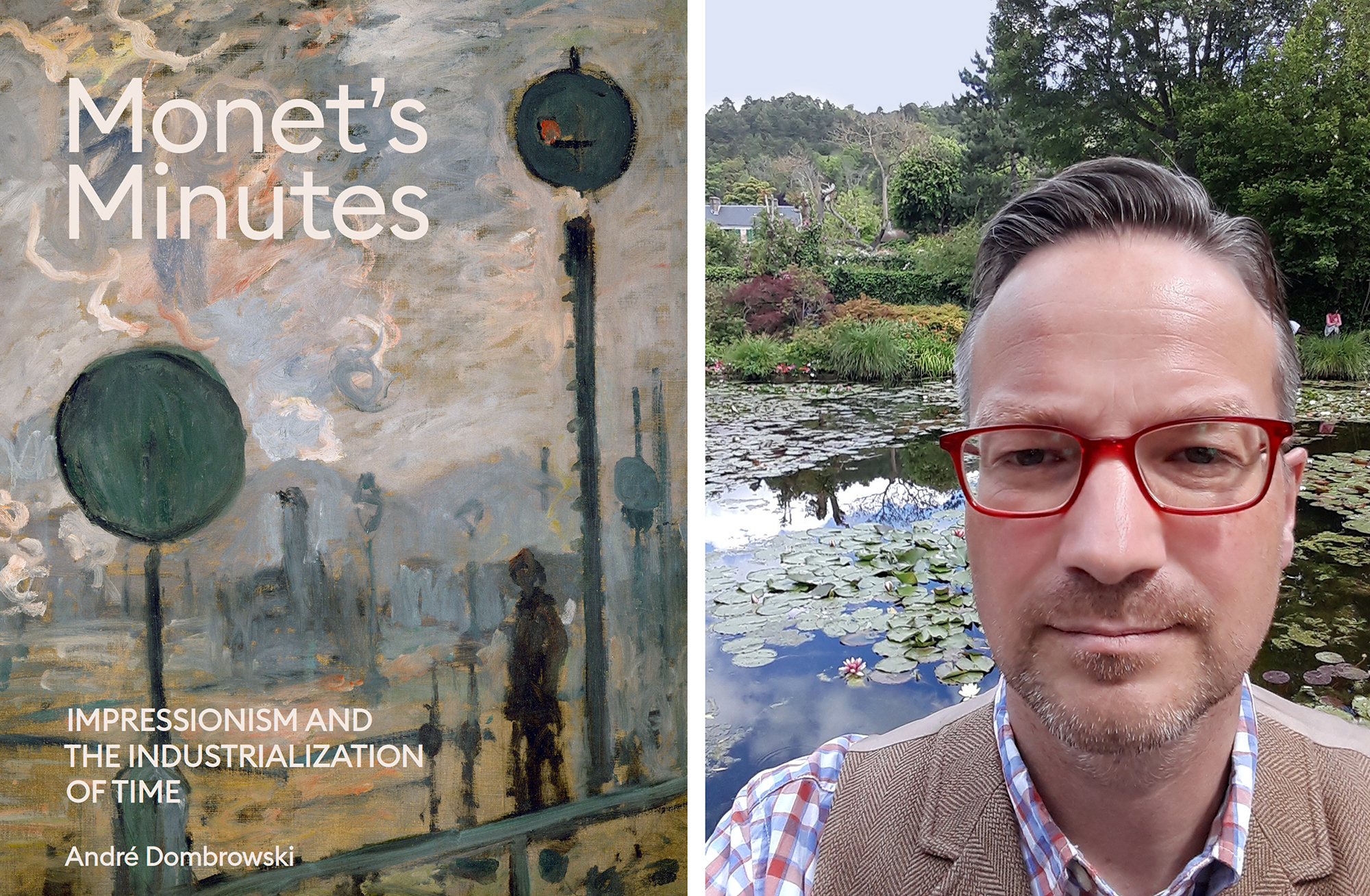For many Impressionist painters, capturing a fleeting moment—what’s known as “instantaneity” in Claude Monet’s own words—became a popular theme for their work, especially during a period in history when society was grappling with the emergence of modern timekeeping.
In his new book, “Monet’s Minutes: Impressionism and the Industrialization of Time,” André Dombrowski, Frances Shapiro-Weitzenhoffer Associate Professor of 19th Century European Art in History of Art in the School of Arts & Sciences, delves into the subject, arguing that Monet’s celebration of instantaneity was more than just a simple aesthetic choice. Rather, it was deeply rooted in the shift during Monet’s lifetime toward a world increasingly concerned with keeping accurate time and the technologies invented to do so.
The book’s inspiration came to Dombrowski while studying the early work of Paul Cézanne, particularly a painting called “The Black Clock” that led him to consider, and read extensively on, the history of time and timekeeping technology. “I came across a book that is absolutely fantastic, by Peter Galison, called “Einstein’s Clocks, Poincaré’s Maps,” about the relationship between modern bureaucratic time and the theory of relativity. At the same time, I was teaching an undergraduate lecture course on Impressionism. Going through the major dates associated with Impressionism, I was realizing just how incredibly parallel they were to the development of modern timekeeping,” he explains.
In the book, Dombrowski knits together the two histories to unearth their concrete interactions and intersections. Monet is his central player, an example of an Impressionist artist who had a “sophisticated, beautiful, stunning response to the emergence of these developments in time management,” Dombrowski says. “Monet really registers this profound change toward a much more artificial, cultural, standardized approach to time.”
This story is by Katelyn Silva. Read more at OMNIA.








